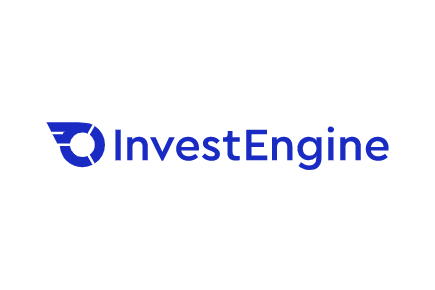
Whether it’s because you have surplus cash reserves and company profits that are currently sitting in savings, or you just want to add a potential additional source of income and revenue to your company, corporate investments can be useful for business owners like you.
So, if you’re looking to become a corporate investor, find out what you need to know about putting your business’s money into the stock market with my guide to investing through a limited company UK.
Also consider: Best Business Investment Accounts
5 steps to investing through a limited company
- Choose an investment platform or broker – Make sure the platform or broker you choose offers a specific business investment account.
- Open an account – Sign up for an account with your broker.
- Deposit funds – Put money into your account to invest with. Only use money you know the business doesn’t need in the immediate future to do so.
- Choose your investments – There are many different assets you can invest in, from stocks, funds, and bonds, to property, and even company-to-company loans.
- Make your investment – You’re ready to invest! Remember: you should always keep an eye on any investments you make to ensure that they’re still suitable for your needs.Find out more about each of these stages below.
Trusted partner

simplifies the process of filing taxes
- Paired with an accredited accountant
- Prepare your tax return
- Submitting the return directly to HMRC
How to invest business cash in 5 steps
Put your company cash to work and invest safely following these steps:
1. Choose an investment platform or broker
Firstly, you’ll need to choose an investment platform or broker to invest through.
There are many factors to consider when choosing the right broker, from trading commission to account fees.
Not all brokers offer a business account, so you’ll need to select one that does have this. Platforms that offer business investment accounts in the UK include:
Visit the website of the broker you’re interested in to check whether it’s suitable for your needs.
2. Open an account
After choosing a broker, you’ll need to open an account with them. This process can typically be started online.
Businesses may be required to provide more details than individuals when opening an account. For example, eToro require information on:
- The type of legal entity that your company is
- Which country your company is incorporated in
- A detailed description of your business activities
- A copy of relevant documents, such as passports or utility bills for shareholders and directors
- A copy of your company’s Memorandum and Articles of Association, or the local equivalents if your company is incorporated outside of the UK. You will need to provide these in English regardless of where your company is based.
These are just the rules for using eToro, and other platforms may ask you for more details than this, while others may require fewer. Be prepared to have information like this to hand when you open the account.
You can check your broker’s website to find out what information you’ll need.
3. Deposit funds
Next, you’ll need to deposit funds into the investment account. You’ll typically be able to do this using any payment method that the broker accepts, provided that this is in the name of the company.
Platforms may have a minimum deposit limit for their corporate accounts. For example, eToro require a $10,000 sum to use their corporate account.
It can be sensible to only deposit as much as your company can afford to – that is, don’t invest money you need to pay bills or run the company day to day, as there’s always a chance you’ll get back less than you invest.
This could put your business in a position where it’s unable to operate, which is why it’s prudent to only invest money that you won’t need in the short term.
4. Choose your investments
Next, you’ll need to choose your investments. You may have read my guide to investing surplus business cash, in which I discussed the pros and cons of six different investment options for corporate investors.
Read below for a brief summary of those assets.
Stocks and shares
This involves buying individual stocks and shares in companies. You can generate a return by selling shares that have risen in value, or collecting dividend payments if these are offered by the company.
Dividends received on corporate investments will be tax-free.
Investment funds
A fund is a collection of other investments in one package which you can then buy units in. This offers you instant diversification, essentially buying multiple investments all at once.
Like stocks and shares, you can generate a return by selling fund units for more than you paid for them, or you can receive dividends over time. Similarly, dividends received will be tax-free.
Investment bonds
An investment bond is a type of loan you can make to another party, typically a company or a government, in return for interest payments.
For businesses, any interest distribution will be subject to the “loan relationship rules”, which means that tax is due on any:
- Increase in value of the bond on an annual basis
- Interest from the bond as it arises.
Micro-entities are not subject to these rules in the same way. Find out more about what this means later in my guide.
Pension contributions
Rather than investing directly in assets straightaway, you could contribute your money to a pension and invest it through there instead.
You’ll receive Corporation Tax relief on pension contributions, and they are also National Insurance-free, making them a fairly tax-efficient method of investing business cash.
Property
Property investment can be useful as there are two ways you can generate a return:
- Capital growth if the property increases in value over time
- Income payments received from rental income if you let your property.
Property investors should note that there can be additional tax concerns when investing in bricks and mortar, including Capital Gains Tax (CGT), Income Tax, and Stamp Duty and Land Tax (SDLT).
Company-to-company loan
A company-to-company loan involves lending your cash to another business in return for interest payments.
This is a fairly high-risk strategy, so make sure you’re willing to take on this additional risk before you invest.
Choosing the right assets for your business
Finding the right asset for your business is simply a case of deciding what your investment goals are and then investing accordingly.
Of course, nothing stops you from combining these investments together to design a strategy that works for you, and these are far from the only assets and options available to you as a corporate investor.
Make sure you research any investments you intend to buy before you invest.
5. Make your investment
Once you’ve chosen a broker, opened your account, deposited your investment funds, and selected your investments, you’re ready to put your business money in the stock market.
Remember to keep an eye on your portfolio to ensure it continues to provide your business with what it needs.
Best platforms for corporate investing through a limited company UK
InvestEngine
Is your business sitting on surplus cash that’s earning little or no interest in the bank? The InvestEngine Business Account is different — it invests in the stock market, giving the opportunity of higher returns than a traditional savings account.
With investment, your capital is at risk. This could mean the value of your investments goes down as well as up.
Investing through a limited company UK FAQs
Can I invest through my limited company?
Can you open an investment account for a business?
Please note
The value of your investments (and any income from them) can go down as well as up and you may not get back the full amount you invested.
Past performance is not a reliable indicator of future performance. Investments should be considered over the longer term and should fit in with your overall attitude to risk and financial circumstances.
A pension is a long-term investment. The fund value may fluctuate and can go down, which would have an impact on the level of pension benefits available. Your pension income could also be affected by the interest rates at the time you take your benefits.

